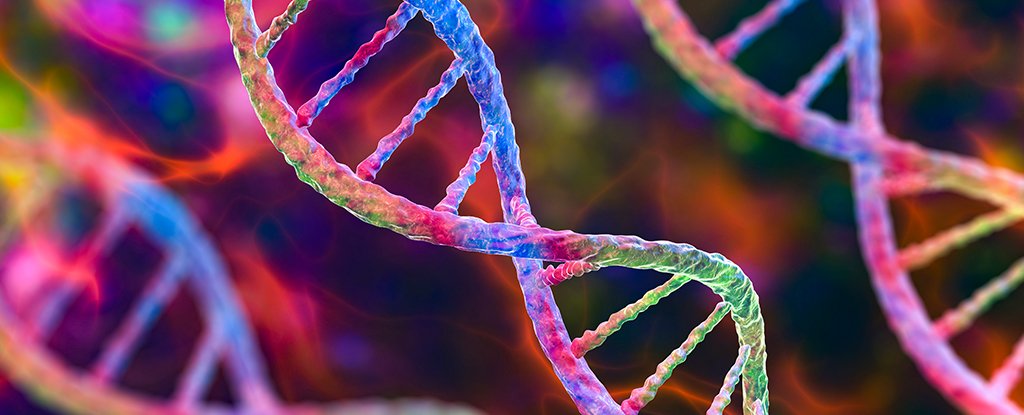We just received more evidence that life on Earth may have started with RNA, with scientists in Japan creating RNA that can replicate, diversify, and develop complexity all on its own.
Long before Earth had its first budding cells of primordial ooze, it was awash with a churning organic soup that sat on the brink of something profound.
That thin line between complex chemistry and the evolution of life represents a pivotal moment in the emergence of biology. Unfortunately, for all of its importance, we know very few details about exactly how it happened.
An experiment conducted by the scientists from the University of Tokyo has now reinforced the view that RNA's unique talents have what it takes to explain how life bubbled forth billions of years ago, backing up what's known as the 'RNA world' hypothesis.
But the research also shows that it might not have happened exactly as we thought.
Their work shows how a molecule that remains crucial to the survival and reproduction of every living thing today can inch its way towards an evolving system if it works as a team.
"We found that the single RNA species evolved into a complex replication system: a replicator network comprising five types of RNAs with diverse interactions, supporting the plausibility of a long-envisioned evolutionary transition scenario," says evolutionary biologist Ryo Mizuuchi.
Stripped to its barest essentials, life is made up of molecules that can make imperfect copies of themselves, churning out a virtually limitless population of variants which might (or might not) hold it together long enough to make copies themselves.
The search for life's origin has in effect been a hunt for candidates that can carry out this replication task without a supporting cast of highly specialized organic materials, such as DNA or proteins, to assist.
RNA has long been a frontrunner in this search. It's ubiquitous throughout the biosphere today, could have been present on ancient Earth as a result of non-biological processes, can preserve a large amount of information, and act as a dynamic physical unit.
This means it could potentially make structures that can physically build new molecules that can in turn build new structures. If this process is imperfect, some of the 'replicator' structures will do the job faster or more efficiently than others, becoming the dominant form of RNA ... at least, until something even better comes along.
As alluring as this idea is, we've known for decades that self-constructed units of individual RNA molecules are just too simple and too unstable for such a scenario. Even its deoxygenated sibling, DNA, lacks the grit to hold itself together long enough for natural selection to get off to a flying start.
That doesn't mean multiple strands acting as a team couldn't perform the job instead. Having a handful of different replicative units acting on a population level just might solve this information problem easily.
Various replicators have been designed around RNA, DNA, and even proteins to show how this might feasibly work, with researchers going to lengths to build in functionality that allows the molecule structures to cooperate and make copies at a suitable rate.
While they can sustain replication, until now none have become more complex over time, leaving open the question of whether RNA is capable of evolving.
Mizuuchi's team have cracked the right design of RNA molecules to create individual replicator molecules that can operate collectively to not only preserve information and change over time, but to do so in such a way that the solution becomes more complex over successive generations.
Their experiment used cloned lengths of RNA in water droplets suspended in oil which underwent more than a hundred rounds of replication, with each round being tested and analyzed.
"Honestly, we initially doubted that such diverse RNAs could evolve and coexist," says Mizuuchi.
"In evolutionary biology, the 'competitive exclusion principle' states that more than one species cannot coexist if they are competing for the same resources. This means that the molecules must establish a way to use different resources one after another for sustained diversification. They are just molecules, so we wondered if it were possible for nonliving chemical species to spontaneously develop such innovation."
The proof-of-concept demonstrates this is possible, so long as the RNA don't compete with one another for resources, but rely on one another in a sort of host-parasite manner. If even one RNA replicator is removed, the others go extinct.
While we can be more confident that an 'RNA world' scenario is plausible, it falls short of showing this is how life bloomed on Earth billions of years ago. For that we'd need diverse bodies of evidence, from geology to astrophysics, to build a convincing case.
Nonetheless, it's a solid step forward in our search for chemical models of evolution that are capable of transforming primordial goop into a dazzling array of biodiversity that continues to become more complex to this very day.
This research was published in Nature Communications.
- Karlston, Mutton and Kaos
-

 3
3



Recommended Comments
There are no comments to display.
Join the conversation
You can post now and register later. If you have an account, sign in now to post with your account.
Note: Your post will require moderator approval before it will be visible.